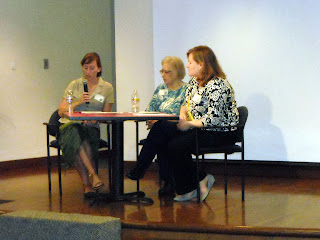It’s here! Over the weekend, I got the first copy of my next bilingual picture story book, The Battle of the Snow Cones, illustrated by Alisha Gambino. We write the stories but it’s the illustrators who bring them to life. Ms. Gambino did an awesome job with her vision of the book and the colors and textures she brought to each page. It is now “our book,” a collaboration between writer and illustrator. Thanks, Alisha.
It’s always a thrill when you actually hold the hard copy in your hands. I know I’m going to have a great time doing school visits with this book because it’s a fun book, funny and whimsical. I had such fun writing this. As writers, we are told to think “outside the box.” Well, I really let my imagination go with this book.
‘Embrace your own eccentricity. Look for new ways to see.” These were some of the comments by some of the guest speakers at the SCBWI-LA conference. “Empower kids,” was another one. “Think of a book as a friend that kids will like to visit,” we were told. I hope my book is one that kids will visit again and again.
The topic of one of the workshops I attended was “The Ultimate Checklist for Submitting to Editors” conducted by Deborah Halverson, award-winning author and editor. I took so many notes on this one because she covered in great detail the ten steps or tests a novel must pass to prove it’s ready for submission. She will cover most of these in her upcoming book, Writing Young Adult Fiction for Dummies (yes, the yellow one). It’s due out in June 2011. I plan to get it. Although I cannot go into great detail, here are some of her suggestions in brief:
1. Use dynamic action words to reveal your character’s mood/personality.
2. Twist & drop test. Take your character from the final chapter of the book and drop him in the first scene of the book. He should behave differently (if he’s grown).
3. CIP test (catalogue, identification, publication). Test for one-line hook. Look at Library of Congress hooks in books.
4. Look for escalation/movement of the plot.
5. Dialogue test. Use highlighter. Plot flats that are in your dialogue.
6. Check the As’s. These are too passive. FIX: Make it more active.
7. Setting – sense of place. Use setting to act upon your character or have character act upon the setting. It reveals emotions.
8. The word “so” is too melodramatic. No real reason for it.
9. Show not tell. Scan for direct feelings.
10. Eagle eyes. Proofread. Print and read your manuscript like a book.
By the way, to read the book description of The Battle of the Snow Cones and to preorder, click on amazon. The book will be in bookstores by November.










